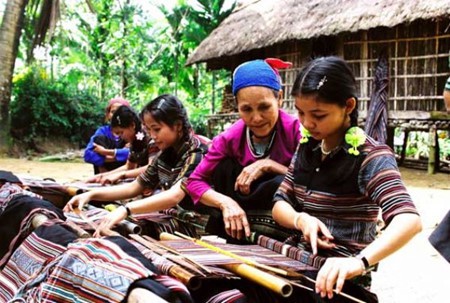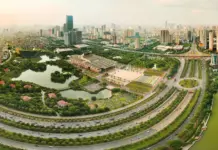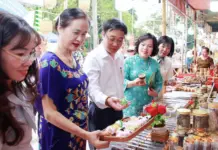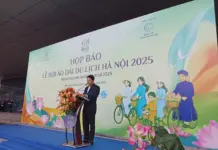The H’re people are known for their unity and mutual assistance in both work and festive activities. Their strong sense of community is built on kinship and neighborhood connections.
H’re villages, known as “plây”, are located on hillsides above the valley. The houses are built next to the fields and water sources, while the villagers live in harmony with each other.
They share common resources like wells and ditches, and there are no fences between houses to mark private property.
In traditional H’re society, each village is an autonomous community with its own institutions. A village is typically led by an older and respected person from a prosperous family known as the “Krăh plây”.
Each village also has a shaman or “pơ dâu” who, along with the “Krăh plây”, conducts worship rituals for the community.
The H’re people have a rich spiritual life with various rituals associated with community activities. These rituals are passed down orally from generation to generation.
The village head is responsible for community affairs such as infrastructure projects, production advice, rule enforcement, and any potential relocations. The head is elected, not hereditary, and consults with members of the village patriarch board on important matters.
Patriarchs like Dinh Ngoc Su, a well-known H’re patriarch in Son Ha district, Quang Ngai province, hold an important role in preserving and transmitting H’re cultural traditions. They are considered protectors of the H’re soul and serve as a bridge between the past and the present.
Artisan and patriarch Dinh Ngoc Su is particularly skilled in H’re folk singing and the making and playing of traditional H’re musical instruments. He is actively passing on these traditions to the younger generation.




